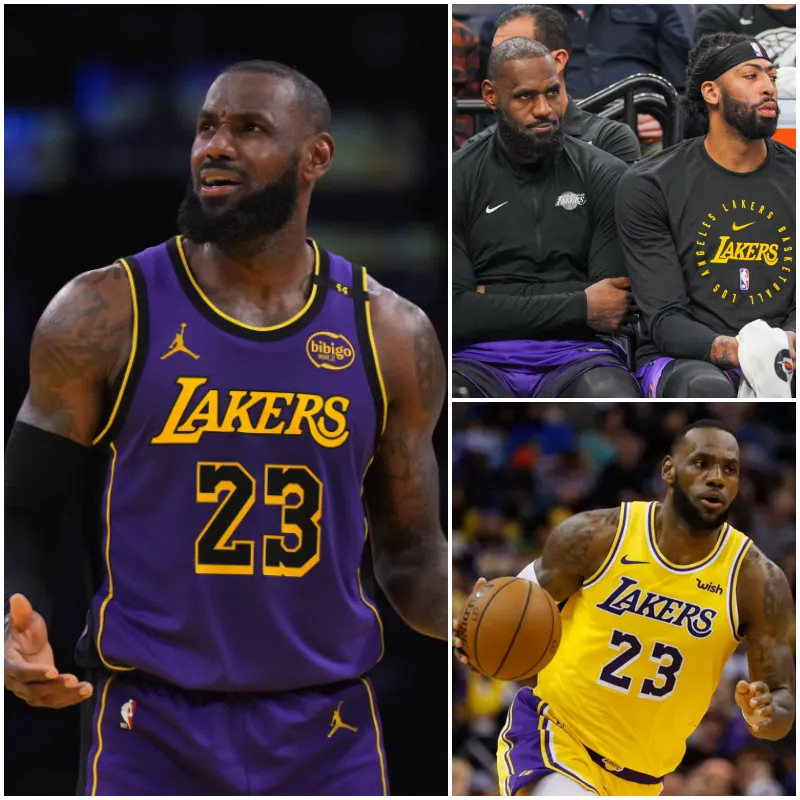What LeBron James’ Decline Means for the Lakers’ Future
LeBron James’ transition from superstar to a high-level contributor poses significant challenges for the Los Angeles Lakers, a franchise built around the premise of his dominance. With his age catching up, the Lakers are facing a pivotal moment that requires tough decisions to balance their roster, address weaknesses, and prepare for a future without James as […]

LeBron James’ transition from superstar to a high-level contributor poses significant challenges for the Los Angeles Lakers, a franchise built around the premise of his dominance. With his age catching up, the Lakers are facing a pivotal moment that requires tough decisions to balance their roster, address weaknesses, and prepare for a future without James as the focal point.
LeBron’s Declining Performance
While James continues to defy age by producing solid stats—22 points, 9 assists, and 8 rebounds per game—his performance no longer matches the lofty standards of his prime. His efficiency has dropped, with the lowest field goal percentage since 2007, and his paint scoring has dipped. Metrics like Box Plus-Minus, PER, and LEBRON (a catch-all statistic named after him) indicate he is now ranked closer to mid-tier All-Star levels rather than as a top-five player.
This decline isn’t surprising for a player entering his age-40 season, but it reveals the Lakers’ over-reliance on James’ superhuman ability to patch roster deficiencies. The team’s current struggles highlight the need for a better supporting cast and a reimagined strategy moving forward.

Persistent Roster Challenges
The Lakers’ roster holes are glaring:
- Lack of Perimeter Shooting: The team ranks 25th in 3-point attempts and 19th in accuracy, highlighting their inability to stretch the floor.
- Defensive Vulnerabilities: Their defense ranks 24th in the NBA, hindered by offensively skilled but defensively weak role players.
- Rebounding Deficiencies: Once a strength, the Lakers now rank 25th in rebounding rate, underscoring a long-term issue since their 2020 championship run.
While rookie Dalton Knecht has added shooting, it hasn’t been enough to offset the team’s broader weaknesses. Even the anticipated return of defensive specialist Jarred Vanderbilt is unlikely to address all the issues.
What the Lakers Need to Compete
To stabilize their roster, the Lakers need two key types of players:
A Reliable Backup Big Man: Anthony Davis dominates when on the floor, but the team falters when he rests. Affordable options like Jonas Valančiūnas could provide depth without breaking the bank.
A 3-and-D Wing: Adding a player who can shoot efficiently and guard elite perimeter threats is critical. However, such players are costly, and the Lakers’ limited draft assets make acquiring one a challenge.

Balancing the Present and Future
The Lakers face a crossroads:
Short-Term Fixes: They could attempt small moves to remain competitive this season, perhaps targeting undervalued players who can fill immediate gaps.
Long-Term Planning: Alternatively, they could shift focus to building a post-LeBron roster. Players like Trae Young or Brandon Ingram might not fit current needs but could become the foundation for a future contender.
Why Bold Moves Are Unlikely
The Lakers’ front office seems reluctant to make bold trades, as seen in their quiet offseason. This could reflect a lack of faith in the team’s potential to contend in a stacked Western Conference. With limited assets and uncertain returns, trading future draft picks for short-term gains might not be the wisest approach.The clock is ticking, and while LeBron’s greatness has carried them far, the team’s future success depends on answering the difficult questions about who they want to become next.













































